#Female sports
Explore tagged Tumblr posts
Text

The amount of misogyny in sports is staggering and sickening.
307 notes
·
View notes
Text


Just placed 1st place at my wrestling tournament btw this was my first medal. 🥇 ♥️
#thisissosurreal
#lesbian#black lesbian#masculine lesbian#black girls of tumblr#qwoc#black tumblr#androgynous#sapphic#lgbtqia#wrestler#wrestling#female wrestler#femme bait#i love femmes#loser lesbian#afro#instagram filters#2014 aesthetic#2014 nostalgia#sports#i love girls#wlw#black queerness#black wlw#lesbian community#black lesbians#female sports#buff lesbian#queer#mipomme
29 notes
·
View notes
Text

This is fantastic. 👏🏻👏🏻👏🏻
Social commentary on the state of women’s sports right now. That last line is gold. 🤭😂
Spread this.
#feminism#radical feminism#radblr#gender critical#terfblr#sexism#sex not gender#rad fem#terfsafe#radical feminist safe#olympics#paris olympics#paris 2024#women’s safety#women’s sports#competitive sports#girls sports#womens rights#women’s rights#trans visibility#trans athletes#transwomen are men#trans sports#female sports#sports#transfeminism#transwomen#peak trans#peak#gender violence
35 notes
·
View notes
Text
The researchers also found that adherence to traditional standards of femininity—such as prioritizing thinness and attractiveness—was a strong predictor of opposition to transgender athlete inclusion. For instance, respondents who endorsed the idea that women should be thin or that women’s muscles were less attractive were less supportive of transgender athletes competing in alignment with their gender identity.
Similarly, those who agreed with statements like “Female athletes will never be as good as male athletes” were more likely to oppose allowing transgender athletes to compete according to their gender identity and to support sex testing.
Negative attitudes toward homosexuality were another powerful predictor of opposition to transgender athletes’ rights. Participants who expressed homophobic views, such as agreeing with statements like “I would be disappointed if I found out my child was homosexual,” were significantly more likely to support sex testing and oppose transgender inclusion.
According to the researchers, the findings suggest that opposition to transgender inclusion often reflects efforts to uphold traditional gender norms and maintain the existing gender order rather than a genuine commitment to advancing women’s sports.
10 notes
·
View notes
Text

Jutta Leerdam 🇳🇱
2023 World Single Distances Speed Skating Championships (Heerenveen)
62 notes
·
View notes
Text
Emiko Miyamoto, first Japanese volleyball player to win an Olympic title

Born in 1937, Emiko Miyamoto is a volleyball player with the legendary Oriental Witches team. She shone on the international scene from an early age. In 1960, she won silver at the World Championships, before going on to win gold two years later. In 1962, the Japanese player was voted MVP of the World Championship and named "the best striker in the world". At the 1964 Summer Olympics in Tokyo, Emiko helped the national team consolidate its reputation as an unbeatable monster by winning gold.
In 1965, she married a former basketball coach and decided to put an end to her brilliant sporting career. Together, they moved to Ibaraki prefecture. There, Emiko shared her passion for sport by giving lectures and volleyball lessons. Emiko died in 2023 in Takahagi, after suffering from septicemia.
8 notes
·
View notes
Text
When in 5y we'll have straight up the original of the tests we can see with our own eyes so people can't accuse this journalist of also lying, you can be sure it will be smothered to death by TRAs and lib left journalists, because they won't be accountable towards the women that suffered from it. They'll still find excuses. (And I'm not just talking about the athletes, but also the women who dared to take a stand and got harrassed by terrorists)
Anyway, they're men and could have taken a cheek swab if they didn't know it/weren't sure of it themselves, so I don't think they participated in good faith. Sex and drugs should be tested with the same seriousness.
It still doesn't justify the racism the athletes received online and it's 100% the ioc's fault, they were in charge of safety and fairness and this organisation is the one which should be flamed for not having clear rules, lying by omission and not having any procedures for intersex athletes. But female sports are not expendable. Contact sports should be especially extra careful with that.
Also stop assigning an arbitrary gender at birth to intersex babies and mutilate them. Genuinely, I've heard about how intersex people are treated by the medical body for about ten years now and it's never not horrifying, starting with the continuous mutilations and rapes and the misogyny.
#also genuinely wondering why if Khelif was raised a girl and Muslim he doesn't wear a hijab if Algeria is oh so conservative#radblr discourse#radblr drama#imane khelif#lin yu ting#female sports#women's sports#female athletes#i stand with jk rowling
10 notes
·
View notes
Text
Here's how to make TIMs performing in female only sports fair:
Give the second place winner behind the TIM the first place prize, pretend the incel wasn't there to begin with lmao
#trans#transgenders#transgender#transgenderism#female sports#female only sports#female only#lgb no t#lgb drop the t#lgb no tq#lgb alliance#autoandrophilia#autogynephilia#moids#tims#tifs#tim#tif#nonbinary#enby
37 notes
·
View notes
Text
Sara Kouskova

#sara kouskova#golfer#female sports#gorgeous#sexy#redhead#world of reds#not me#ginger#worldofreds#girl#determined#concentration#focus#action shot
5 notes
·
View notes
Text
Shame on any Sports brand that been capitalizing on athletes for as long as they have to being SILENT On the Murder of FEMALE sports!
Shame on you!
SHAME!
#female sports#Olympics#sports#women#protect female sports#female#XX#xy#Nike#adidas#lulu lemon#athleisure#athlete#athletics#trans women are not women#trans#transsexuals#men are NOT women#women are NOT men#women rights#human rights
2 notes
·
View notes
Text
youtube
K3mistry News Brief 📰
Caitlin Clark is “Athlete of the Year”
The following speaks about Time Magazine’s decision to crown Caitlin Clark “Athlete of the Year.”
Narrated by: J. Stokes
#caitlin clark#wnba basketball#wnba#time magazine#athlete#basketball#sports#aja wilson#simone biles#women athletes#women’s sports#female athletes#female sports#Youtube
1 note
·
View note
Text

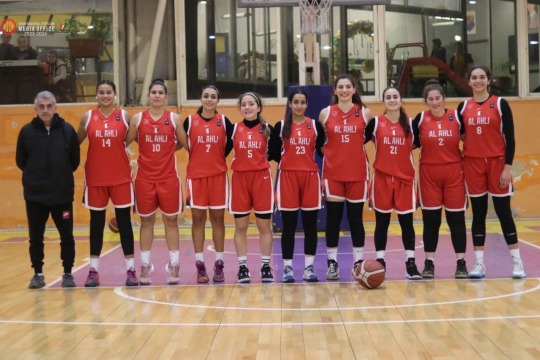

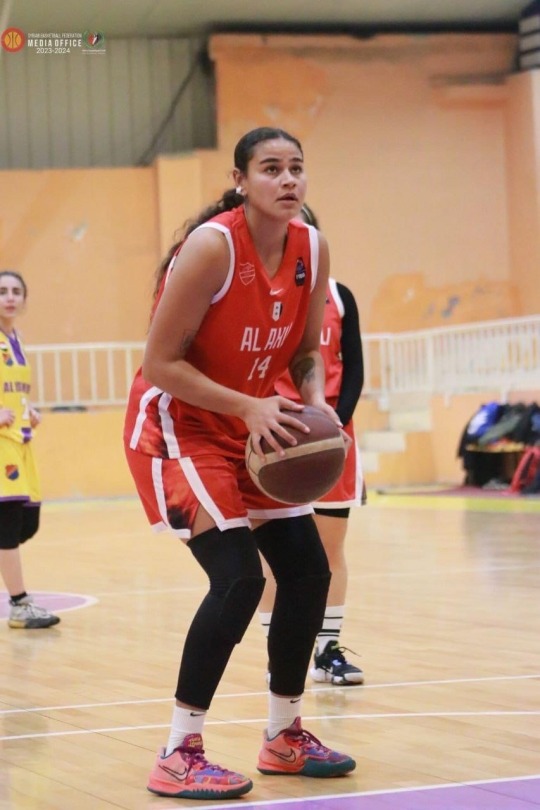
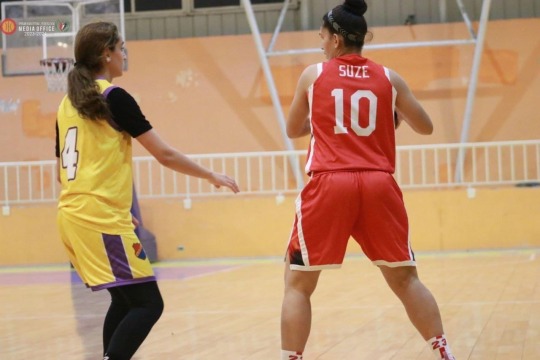


Al-Ahli vs. Al-Yarmouk 🏀
#syria#basketball#syrian girls#syrian women#sport#women sports#female sports#fiba#سوريا#البنت السورية#المرأة السورية#كرة السلة#رياضة
4 notes
·
View notes
Text

By: Gregory Brown
Published: Sep 1, 2023
About the Author
Dr. Greg Brown is a professor of Exercise Science at the University of Nebraska at Kearney where he also serves as the Director of the LOPERs General Studies program. His primary teaching responsibilities are undergraduate and graduate courses in Exercise Physiology, but he has also taught courses in Introductory Anatomy & Physiology, Sports Nutrition, Research Methods, and Professional Development in Exercise Science. His research has evaluated the effects of nutritional supplements on the physiological response to exercise, the physiological responses to various types of exercise, effective teaching in the exercise science program, and sex-based differences in sports performance. He has authored or co-authored over 50 peer reviewed publications and serves as a peer-reviewer for over two dozen academic journals. He is a member of the American College of Sports Medicine (ACSM), the National Strength and Conditioning Association (NSCA), and the Association of American Educators (AAE).
He and his wife (Amber) have two adult sons and one daughter-in-law. Sadly, both their cat and dog passed away in the past year. His hobbies include running, hunting, fishing, studying history, and watching movies.
--
In the current battle over women’s and girls’ rights to female-only sports, a commonly heard mantra is that there are no sex-based differences in sports performance before puberty. Those who make this claim often contend that if a male is put on puberty blockers before age 12 (or Tanner development stage 2; whichever comes first), he can compete fairly in the female category. But is this really true?Are there really no differences in athletic performance between boys and girls before the onset of puberty? Do puberty blockers administered to children really erase male sex-based athletic advantages? Below, I’ll try to provide answers to these questions.
Like many things currently being put forth in public discourse as settled science, the presence or absence of sex-based athletic differences before puberty is not an open and shut case. There are few databases of records for children’s competitive sports performance and there has been limited scholarly research evaluating sex-based differences in competitive sports performance before puberty. Currently, there are no consensus statements from professional organizations such as the North American Society for Pediatric Exercise Medicine (NASPEM), the National Strength & Conditioning Association (NSCA), the American College of Sports Medicine (ACSM), or the National Athletic Trainers’ Association (NATA) stating that there are, or are not, sex-based differences in athletic performance before puberty.
Below, I will cover the main reasons our data on pre-pubertal sex differences in athletic performance is relatively poor, and draw some preliminary conclusions based on the data we do have that indicates such differences are actually quite significant.
Lack of Records
One challenge that arises when trying to determine whether there are sex-based differences in athletic performance before puberty is the limited availability of records documenting competitive athletic performance in children. For adults participating at the Olympic and collegiate levels, meticulous record-keeping is the norm, and these records are readily accessible online. A simple internet search yields numerous listings of Olympic and collegiate records spanning various sports such as swimming, track and field, cross country, bicycling, and more.
Similarly, records for sports in secondary schools are also carefully maintained. In the United States, it is fairly easy to obtain the results of the most recent state high school track championship from news sources and on the state scholastic athletic association websites. Most secondary schools additionally showcase records for track and field, cross country, and other sports. The abundant availability of records in the Olympic, college, and secondary school arena makes it very easy to compare male and female athletes competing in the same events at the same level of competition. Such comparisons vividly illustrate that once puberty sets in, males outperform females by 10-30 percent (depending on the sport and event).
However, most sports involving pre-pubertal children operate outside the jurisdiction of state scholastic athletic association or even the local primary school. Instead, these activities are typically organized by local clubs or community recreation departments. Children’s sports often prioritize recreation and skill development over competitiveness. As a result, records pertaining to race times, throwing distances, weightlifting achievements, or other athletic benchmarks for children are not as meticulously maintained or as readily accessible as records for high school, college, or Olympic sports. Some have interpreted the lack of records for children’s sport as an indication that any sex-based differences in athletic performance before puberty are negligible or insignificant.
Lack of Scholarly Attention
Adding to the challenge of limited records detailing competitive athletic performance before puberty is the constrained number of available scientific evaluations. For example, Handelsman [1] analyzed publicly accessible data on swimming, running, and jumping in children and adolescents. Although his data clearly illustrate that boys aged 10 and under run faster, swim faster, and jump farther than girls of comparable age, he published these findings in 2017 in a paper titled “Sex differences in athletic performance emerge coinciding with the onset of male puberty.”
In 2019 Senefeld et al. [2] drew upon data from USA Swimming and found that, before age 10, the top 5 girls swam faster than the top 5 boys. However, no disparities in swimming performance were observed between the 10th-50th ranked girls and boys. Additionally, in 2020, Huebner and Perperoglou [3] reported that there were no sex-based differences in competitive weightlifting performance before age 10. To my knowledge, these studies represent the only scholarly examinations of competitive performance in children before puberty.
Taken together, the scarcity of sports records for pre-pubertal children and the limited scholarly output on children’s competitive performance has led some to conclude that there are no differences in athletic performance between boys and girls before puberty. Some have even gone so far as to erroneously asserting that a broad consensus exists regarding the absence of sex-based differences in athletic performance before this developmental stage. However, this does not appear to be true, and in the sections below I will present information that demonstrates the existence of sex-based differences in athletic performance before puberty.
School Based Fitness Testing
In contrast to the limited records available for sports performance and the scarcity of scholarly evaluations regarding children’s competitive sports performance, there exists a plethora of scholarly evaluations focused on school-based physical fitness testing in children as young as six years old. Various tests, such as the Presidential Fitness Test, FitnessGram, Eurofit Fitness Test Battery, and other school-based physical fitness assessments, consistently show that boys tend to outperform girls of the same age in tests measuring muscular strength, muscular endurance, running speed, aerobic fitness, ball throwing, and kicking distance. On the other hand, girls tend to perform better than boys in tests assessing flexibility.
A small sampling of publications evaluating school-based physical fitness testing includes a longitudinal evaluation of 240 German boys and girls aged 9-12 years [4], an analysis of 85,347 fitness test results among Australian boys and girls aged 9-17 years [5], an evaluation of 424,328 Greek boys and girls aged 6-18 years [6], a study examining 1,142,026 performances in a 20-meter shuttle run among boys and girls aged 9-17 year from 50 countries [7], and an assessment of 2,779,165 Eurofit performances among boys and girls aged 9-17 year from 30 countries [8].
Collectively, these studies (along with many others not listed here) indicate a consistent pattern: before puberty, boys tend to outperform girls of the same age in tests measuring muscular strength, muscular endurance, running speed, aerobic fitness, ball throwing, and kicking distance. Conversely, girls typically exhibit better performance in tests focused on flexibility. While physical fitness tests do not always accurately predict success in competitive sports, physical fitness is often a prerequisite for success in sports.
Sports Records
USA Track and Field (USATF) sanctions youth track and field meets in most states, including regional and national championship events. The youngest age categories in USATF are the 8-and-under and the 9-10-year-old age groups, both of which can reasonably be assumed to represent pre-pubertal athletes. Upon evaluating the performances at the USATF state-level Junior Olympics, it becomes apparent that boys frequently jump and throw farther, and run faster than comparably aged girls.
For instance, if we examine the race times for the 100m, 200m, 400m, 800m, and 1500m races, along with the distances achieved in shot put, javelin, and long jump events in the 2023 USATF Nebraska Association Junior Olympics [9], for both boys and girls in the 8-and-under age group, we find that no girl would have outperformed a boy to secure the gold, silver, or bronze medals in any of these events. For the same events in the 9-10-year-old age group, only one girl would have secured a gold medal (out of a possible 8), while two girls would have clinched silver medals (out of 8), and another two girls would have won bronze medals (out of 8). Of course, one could reasonably argue that data from a single youth track meet in Nebraska may not be representative data for pre-pubertal athletic performance as a whole.
So, if we make the same comparison in the same events (100m, 200m, 400m, 800m and 1500m races, and the distances for shot put, javelin, and long jump) in the 2023 USATF Arizona Association Junior Olympics [10], we observe that girls in the 8-and-under age group would have secured zero gold medals, one silver medal, and two bronze medals. In the 9-10-year-old category, a girl would have tied with a boy for a single gold medal, and three girls would have taken home bronze medals. Yet, once again, one could reasonably argue that the combined data from track meets in Nebraska and Arizona may not accurately represent the broader spectrum of pre-pubertal athletic performance.
So, if we make the same comparison for the same events (100m, 200m, 400m, 800m and 1500m races, and the distances for shot put, javelin, and long jump) at the 2023 USATF National Youth Outdoor Championships [11]—an event that includes athletes from many different states—we discover that girls in the 8-and-under age group would have won two gold medals (out of 8), three silver medals (out of 8), and no bronze medals. Girls in the 9-10-year-old age group would have won a single gold medal, two silver medals, and two bronze medals. Collectively, looking at these three track meets, placing side by side the race times for the 100m, 200m, 400m, 800m, and 1500m races, as well as the distances for shot put, javelin, and long jump for boys and girls in the 8-and-under and 9-10-year-old age groups, it’s clear that if girls were to compete against boys, they would have secured only 23 out of 144 medals. Within this tally, girls would have received only five out of 48 gold medals.
Of course, one could reasonably argue that the examples above represent only a single year and only three specific track meets. However, if we evaluate the overall youth records for the best performances in running, throwing, and jumping from USATF [12], the USATF National Junior Olympics [13], and the School Sport Australia Track & Field Championships [14], they collectively indicate that boys aged 10 and under outperform girls of the same age across all recorded events. On average, boys outperform girls by 3 percent in running, 9 percent in jumping, and 16 percent in throwing events. Similarly, records for boys aged 10 and under in USA Swimming show faster times than girls' records in 18 out of 22 events [15].
While examining medal counts at specific track meets offers valuable, albeit somewhat anecdotal, insights into performance differences between boys and girls before puberty, these counts do not qualify as a rigorous scientific evaluation. Though scholars often use evaluations of overall records for best performances to showcase sex-based differences in adult athletic performance, disparities in pre-pubertal children’s performance are frequently dismissed as being too small to be meaningful. Moreover, the overall youth records from USATF have not been updated since 2018, the records from the USATF National Junior Olympics have not been updated since 2019, and the School Sport Australia Track & Field Championship records have not seen updates since 2016. It’s unclear why these records have not been updated, but it does raise some questions about the accuracy of these records.
Nonetheless, by considering scholarly assessments of school-based fitness test data, several youth track meets, track and field best performance records, and swimming best performance records, it certainly seems like there is an emerging pattern of pre-pubertal male sex-based athletic advantages.
Scholarly Evidence for Sex-Based Sports Differences Before Puberty
Some colleagues and I have recently presented an assessment of sex-based differences in athletic performance before puberty at the 2023 Annual Meeting of the American College of Sports Medicine [16]. Drawing upon a national database of track and field performance (athletic.net) and evaluating the top 10 performances for boys and girls in the 8-and-under and 9-10-year-old age groups over a 5-year period, we observed consistent trends. Boys consistently (and statistically) ran almost 5 percent faster, long jumped 6 percent farther, threw the shot put 20 percent farther, and threw the javelin 40 percent farther than girls of the same age. At the 2023 Annual Meeting of the American College of Sports Medicine, a separate team of researchers from a different university used the same database, albeit with slightly different evaluation methods, and came to similar conclusions regarding the pre-pubertal advantages of male athletes [17].
In light of these findings, it is reasonable to conclude that male athletes indeed possess advantages in sports performance before reaching puberty. This conclusion is founded on extensive scholarly evaluations of fitness tests in schools, data gleaned from youth track meets and records, as well as youth swimming records for best performances. My personal analysis of the top 10 national track and field performances for boys and girls within the 8-and-under and 9-10-year-old age groups across a 5-year period supports this, further corroborated by similar outcomes from another team of researchers. Admittedly, the sex-based disparities before puberty are less pronounced than after puberty, but they exhibit a consistent pattern that yields a statistically significant difference favoring male athletes.
What about Puberty Blockers?
Whether there are, or are not, sex-based differences in athletic performance before puberty still leaves questions about how puberty blockers affect athletic performance. The truth is, we don’t have enough information to answer questions about how puberty blockers affect athletic performance. There are no published studies evaluating the effects of puberty blockers on muscle strength, muscle endurance, running speed, aerobic fitness, as well as throwing or kicking distance in children, whether in school or laboratory settings. Similarly, there is no research on how puberty blockers might impact performance in competitive sports. Limited studies have touched upon the effects of puberty blockers on body composition and height.
Two long-term studies investigating the impact of puberty blockers on body composition and height indicate that the sex-based differences in lean body mass [18] and height [19] persist even after 2 years on puberty blockers followed by an additional 6 years of so-called “gender-affirming hormone therapy.” It is undeniable that male advantages in lean body mass and body height translate to athletic advantages as adults. It’s reasonable to assume that these advantages also extend to athletic performance among children and adolescents. The sex-based differences in performance in children may be smaller than in adults, but small differences can mean the difference between a gold medal and no medal in sports.
Conclusion
Readers of Reality’s Last Stand will be familiar with the important sex-based differences between males and females. These differences begin at conception and continue throughout one’s life. Sex-based anatomical and physiological differences confer inherent athletic advantages to males when compared to females of the same age, possessing similar talents and undergoing similar training, across all age groups, even before puberty. Having a transgender identity, with or without the use of cross-sex hormones, does not eliminate sex-based differences in anatomy and physiology, nor does it erase sex-based differences in athletic performance.
It is my opinion that, in order to maintain a level playing field for female athletic competition, transgender identified males (i.e., “transgirls” and “transwomen”) should not be allowed to participate in the female sports category before or after puberty even when puberty blockers are used.
#Greg Brown#sports#female sports#male sports#womens sports#girls sports#mens sports#boys sports#athletics#female athletes#male athletes#cheating#sex based differences#sex differences#anatomy#physiology#athletic performance#gender ideology#queer theory#gender identity ideology#genderwang#gender identity#puberty#puberty blockers#religion is a mental illness
4 notes
·
View notes
Text
Megyn Kelly Discusses Trans Ideology
youtube
Megyn Kelly is very well spoken in this video! You must hear what she has to say. She is respectful and considerate, and at the same time she is making very good points that should be considered by everyone.
3 notes
·
View notes
Photo



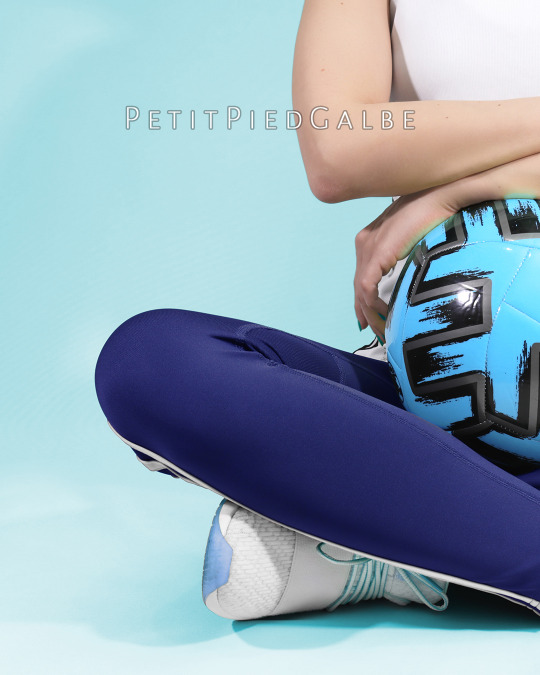

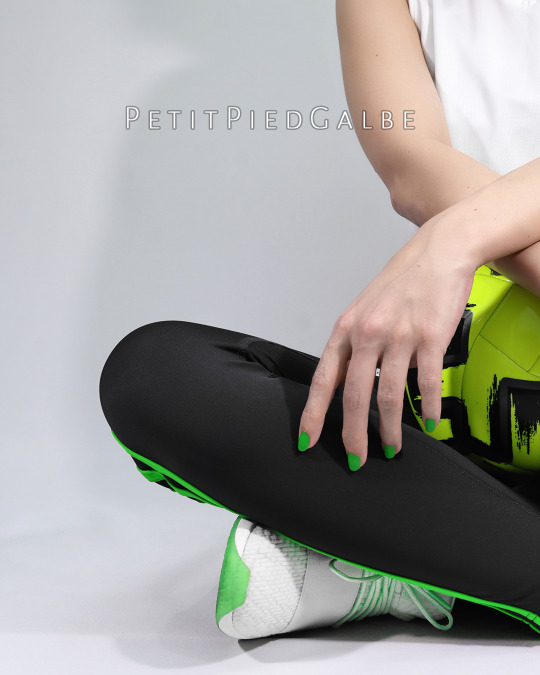

Outside sports season!
Sportswear and shoes already prepared for a season, now only left is to wait for a little bit more warm days. Do You have Your favorite sports game to play or watch?
#sports games#sports wear#sport style#sport girl#sport shoes#sport fashion#lifestyle#fashion photos#fashion photoset#fashion photoshoot#active lifestyle#woman sport#female sport#female sports#sport clothes#photography#photographer#women photographers
6 notes
·
View notes
Text
Madeleine Hinch is Britain's first female Olympic field hockey title

Madeleine Hinch was born in 1988. Her journey into field field hockey began unexpectedly. It was a schoolteacher who pointed out her exceptional catching and diving skills during a rounders match, a perfect combo for becoming a goalkeeper. Initially reluctant to play in goal, she grew accustomed to the role with each passing season. This perseverance led to a promising medal at the Youth Olympic Games. In 2008, Madeleine won her first international cap. Unfortunately, she narrowly missed out on a place on the British team for the London Games. Nevertheless, the athlete quickly established herself as a pillar of the squad. In 2014, she won her first international medal with England, silver at the Commonwealth Games.
Two years later, Madeleine was at her very best at the Rio Olympics. With composure and precision, the goalkeeper pulled off a remarkable feat, saving all four penalties in the final against the Netherlands. This performance in clutch time earned her the first British title in the history of field field hockey. She continued her rise by winning bronze at the 2018 Commonwealth Games before announcing a temporary retirement from the international scene.
In May 2019, Madeleine made her return to the national team, and in 2022 she won her only gold medal at the Commonwealth Games. In March 2023, she officially announced her retirement from the sport.
3 notes
·
View notes